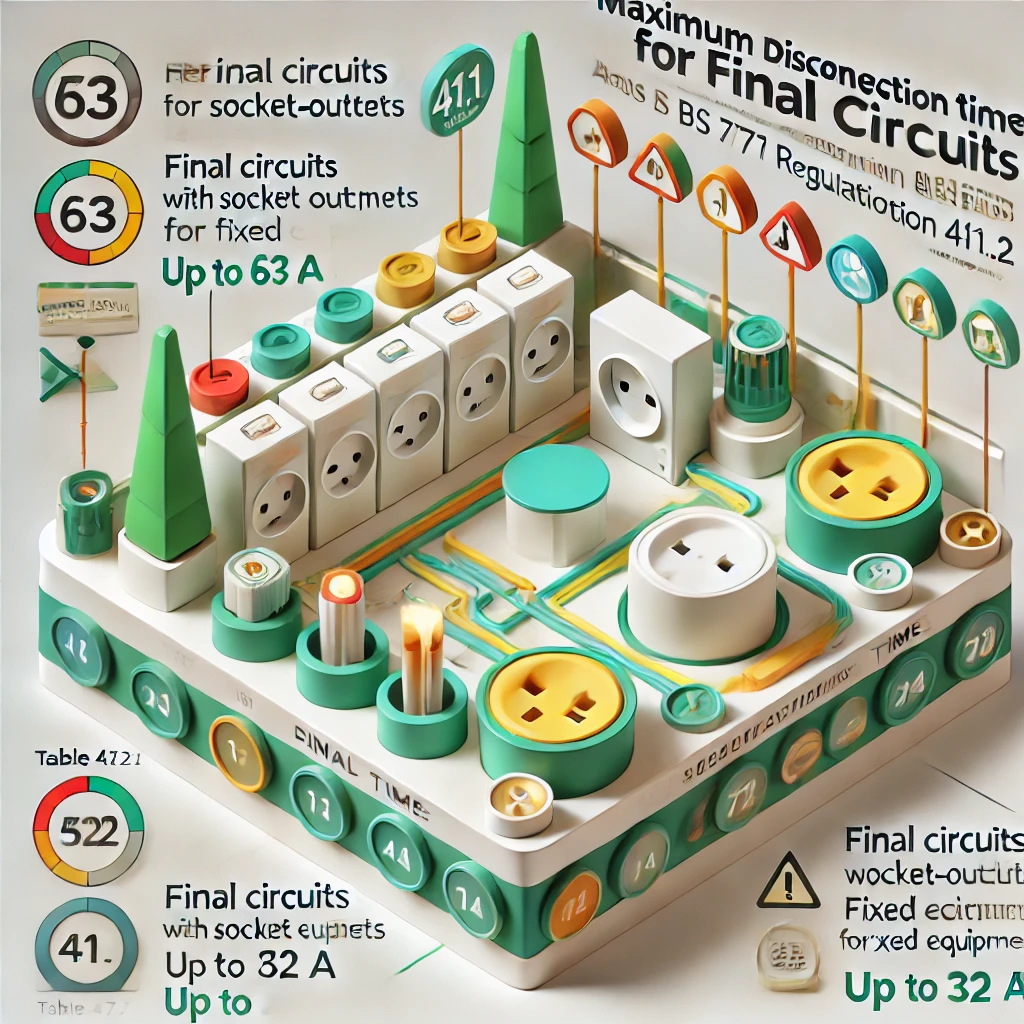What are the Maximum Disconnection Times for Final Circuits According to BS 7671?
According to BS 7671 regulation 411.3.2.2, the maximum disconnection times stated in Table 41.1 shall be applied to final circuits with a rated current not exceeding 63 A with one or more socket-outlets, and 32 A supplying only fixed connected current-using equipment.

OW London Electrician and Home Automation Engineers Team
What are the Maximum Disconnection Times for Final Circuits According to BS 7671?
Regulation 411.3.2.2 states:
"The maximum disconnection times stated in Table 41.1 shall be applied to final circuits with a rated current not exceeding:
- (i) 63 A with one or more socket-outlets, and
- (ii) 32 A supplying only fixed connected current-using equipment."
In simpler terms, this regulation mandates that for safety reasons, electrical circuits (referred to as final circuits) must disconnect within a specified time if a fault occurs. The maximum disconnection times are different based on the type of circuit and its usage:
Final Circuits with Socket-Outlets (up to 63 A):
If the final circuit has socket-outlets (the points where you plug in appliances) and its rated current does not exceed 63 amperes, the disconnection time must comply with the times listed in Table 41.1 of the BS 7671 regulations. This ensures that any electrical fault is quickly isolated to prevent harm or damage.
Final Circuits for Fixed Equipment (up to 32 A):
If the final circuit supplies only fixed equipment (such as large appliances or machinery that are permanently connected and do not use plugs), and the rated current does not exceed 32 amperes, it must also adhere to the disconnection times specified in Table 41.1.

Frequently Asked Questions
Q: Why is there a difference in the rated current limits for socket-outlets and fixed equipment?
A: According to BS 7671 regulation 411.3.2.2, socket-outlets can be used for a variety of portable appliances, which may introduce different types of electrical loads and risks. Therefore, a higher current limit (63 A) is permitted. Fixed equipment typically has predictable load characteristics, hence a lower current limit (32 A) ensures adequate safety.
Q: What happens if the rated current exceeds these limits?
A: According to BS 7671 regulation 411.3.2.2, circuits with rated currents exceeding these limits must follow different regulations and may require more stringent safety measures, including faster disconnection times and additional protective devices.
Q: Where can I find Table 41.1 for the disconnection times?
A: Table 41.1 is included in the BS 7671 standards. It details the specific disconnection times required for various circuit conditions to ensure safety during electrical faults.
Q: What is meant by 'disconnection time'?
A: According to BS 7671, disconnection time refers to the maximum duration allowed for an electrical circuit to automatically shut off the power when a fault (such as a short circuit or overload) is detected. This helps prevent electric shock and fire hazards.
Q: Why is rapid disconnection important?
A: Rapid disconnection is crucial because it minimizes the risk of electric shock, reduces the potential for electrical fires, and protects both people and property from harm. Adhering to the specified disconnection times ensures a higher level of safety in electrical installations.
What users Saying
Discover what our customers think about our services. Their feedback reflects our commitment to delivering exceptional service and expert solutions for all electrical and security needs.

